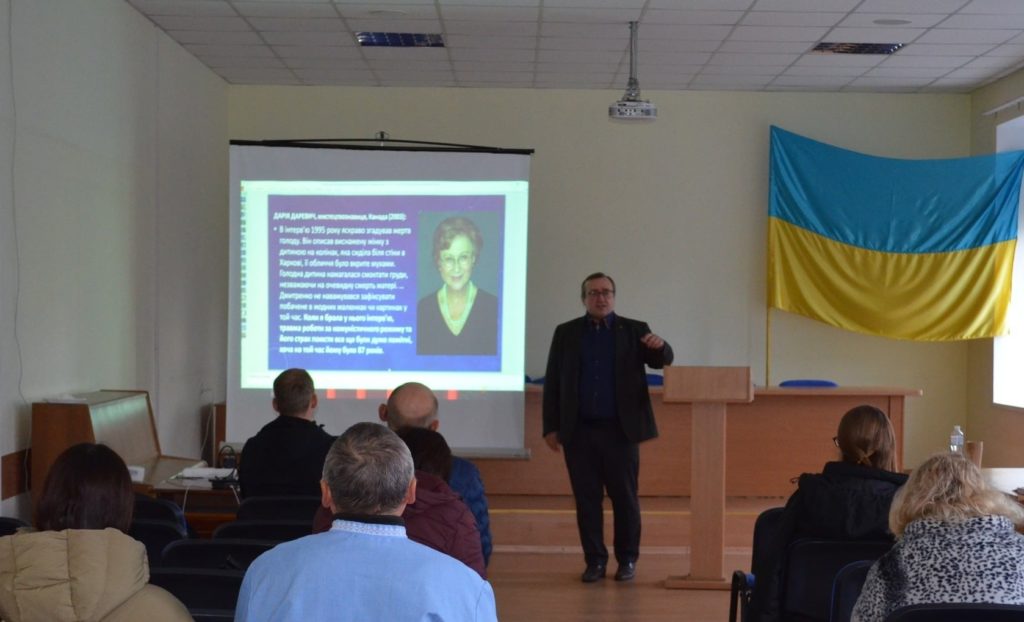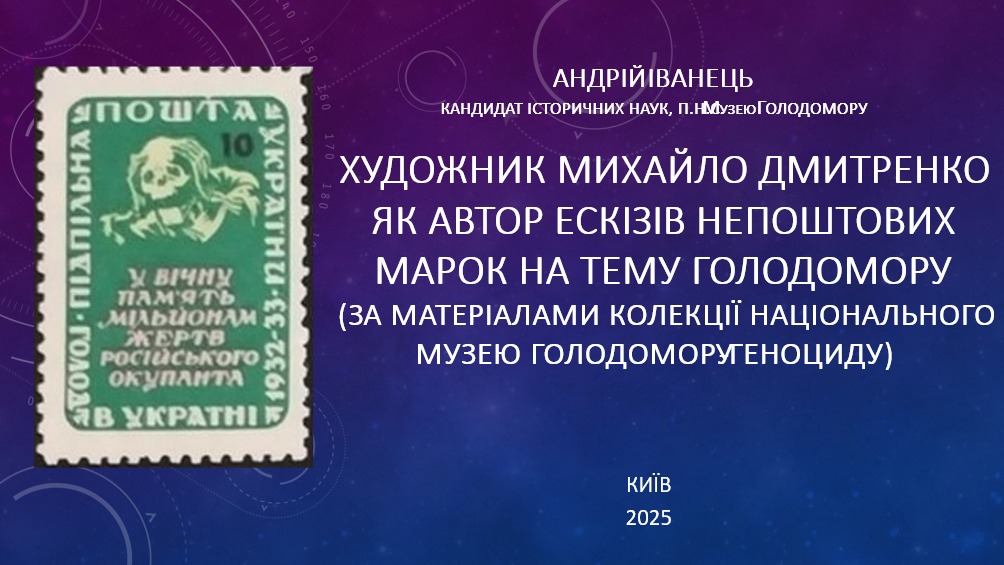Mykhailo Dmytrenko’s small-scale graphic work about the Holodomor: Andrii Ivanets participated in an international conference
Andrii Ivanets, a senior researcher at the Holodomor Museum, participated in the international conference “Contemporary Ukrainian Studies in the Defence of the State and its Post-War Reconstruction” with a presentation entitled “Artist Mykhailo Dmytrenko as the author of sketches for non-postal stamps on the Holodomor theme (based on materials from the collection of the National Museum of the Holodomor-Genocide).
Over 200 participants from 27 countries, including scholars from Ukraine, Germany, the United States, Poland, Hungary, Romania, Moldova, Turkey, and Greece, attended the conference. Taras Shevchenko National University of Kyiv, along with numerous other leading Ukrainian academic institutions, including the National Academy of Sciences, organised the event.
 Andrii Ivanets, a senior researcher at the Holodomor Museum.
Andrii Ivanets, a senior researcher at the Holodomor Museum.
Mykhailo Dmytrenko (1908–1997) was an outstanding author of easel and monumental painting, a graphic artist, art historian, and organiser of Ukrainian artistic life in Ukraine, Germany, Canada, and the United States. The artist is particularly known as a painter who survived the Holodomor and was one of the first to reflect this devastating experience for Ukrainians in his work as a result of the crimes of the communist regime based in Moscow. M. Dmytrenko’s most famous work on the tragedy of Ukrainians in 1932–1933 is the painting “1933”, created in 1963 on the 30th anniversary of the Holodomor.
Scholars have hardly analysed his small graphic designs on the Holodomor theme, created for the Underground Postal Service of Ukraine (UPSU) in the 1950s. In 2023, a collection of UPSU non-postal stamps related to the Holodomor was donated to the Museum by Vasyl Shtokalo, a collector and researcher from Ternopil. According to his words, the publications were transferred to Ukraine by Stepan Goliash (1919–2003), a veteran of the Ukrainian Insurgent Army, public figure, and researcher of Ukrainian non-postal stamps.
In his report, Andrii Ivanets, a researcher at the Holodomor Museum and candidate of historical sciences, conducted the first comprehensive analysis of M. Dmytrenko’s work as the author of sketches for stamps on the theme of the Holodomor, in particular summarised that the discovered and analysed issues of the PSU for 1953–1967 prove that the propaganda publication of non-postal stamps became one of the principal visual tools of the Ukrainian liberation movement in the diaspora. The stamps, created by an eyewitness to the genocide, are a unique historical source that records not only the fact of the Holodomor, but also the political subjectivity of Ukrainian emigration in its coverage as a crime of the communist regime based in Moscow. It was an element of resistance to the USSR’s policy of amnesia regarding the genocide.
M. Dmytrenko’s probable use of transformed expressionist images by Norwegian artist Edvard Munch in small-scale graphics demonstrates the successful adaptation of European modernist approaches to a traumatic national context. It served to ensure maximum emotional and propaganda effectiveness of the message in the struggle for the memory of the Holodomor in the world.
The researcher emphasised the necessity for a comprehensive study of the Holodomor topic in the works of M. Dmytrenko, one of the significant figures in Ukrainian artistic life abroad.
